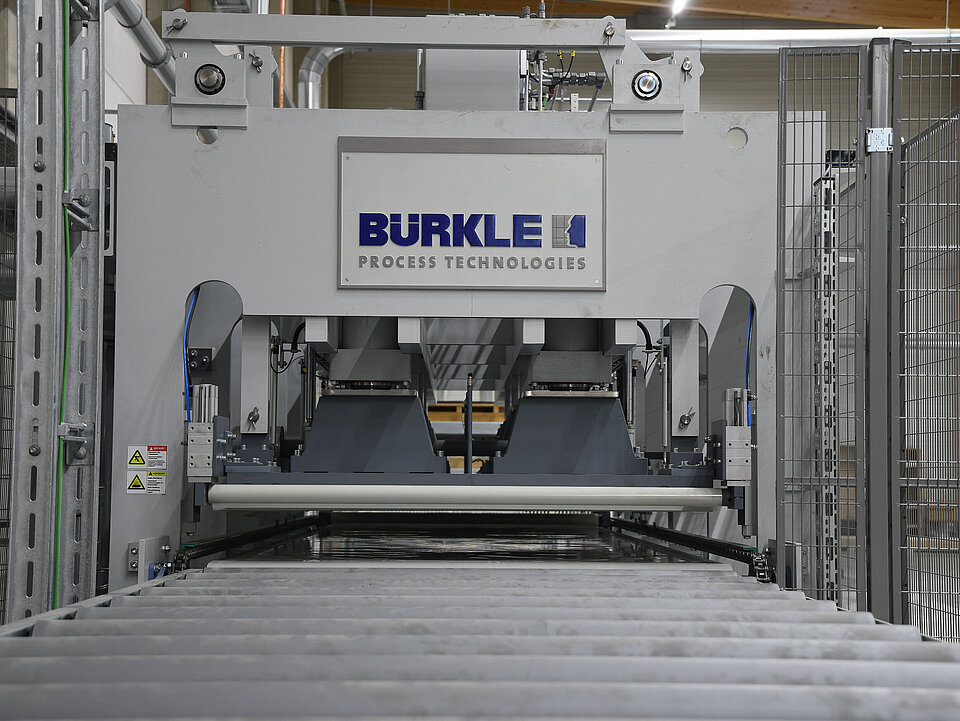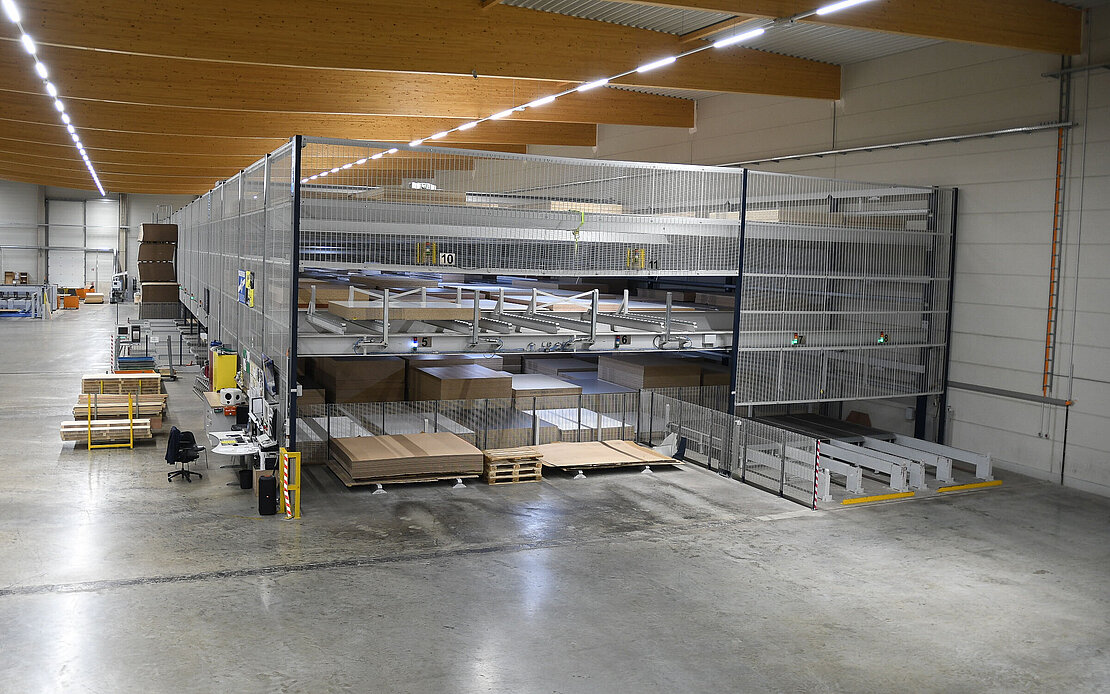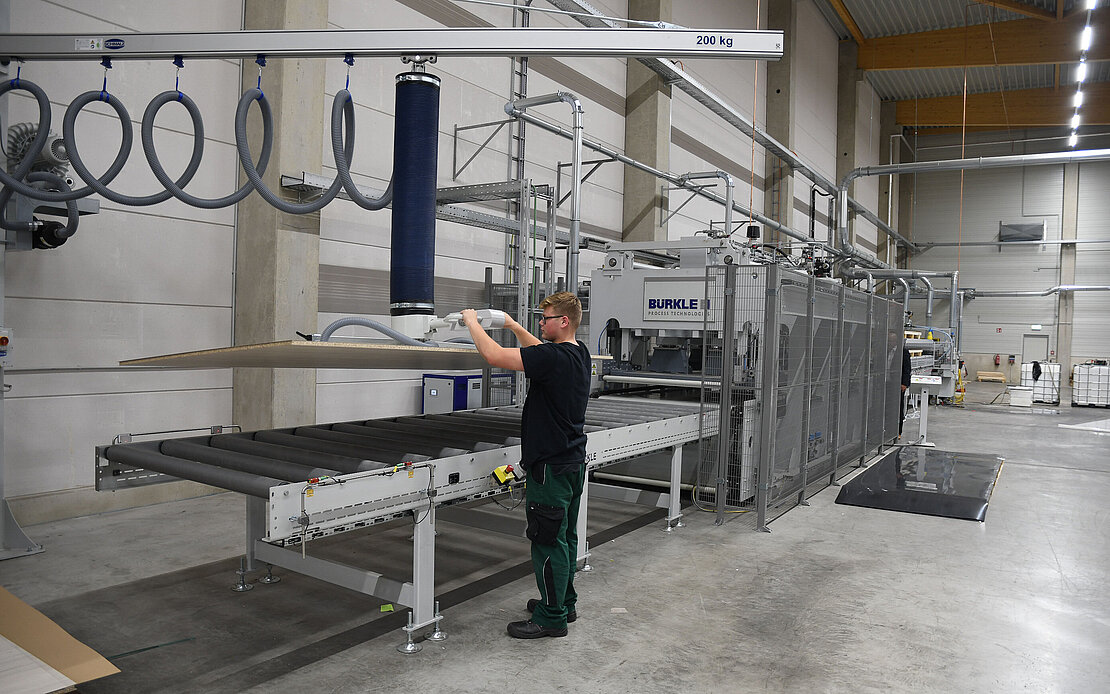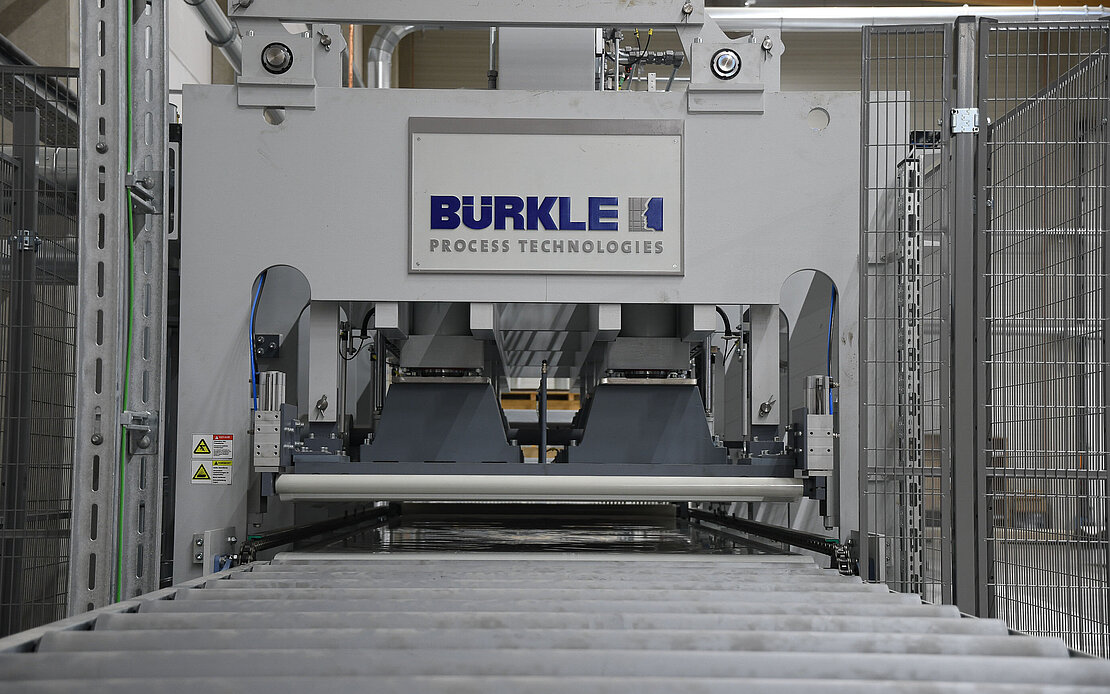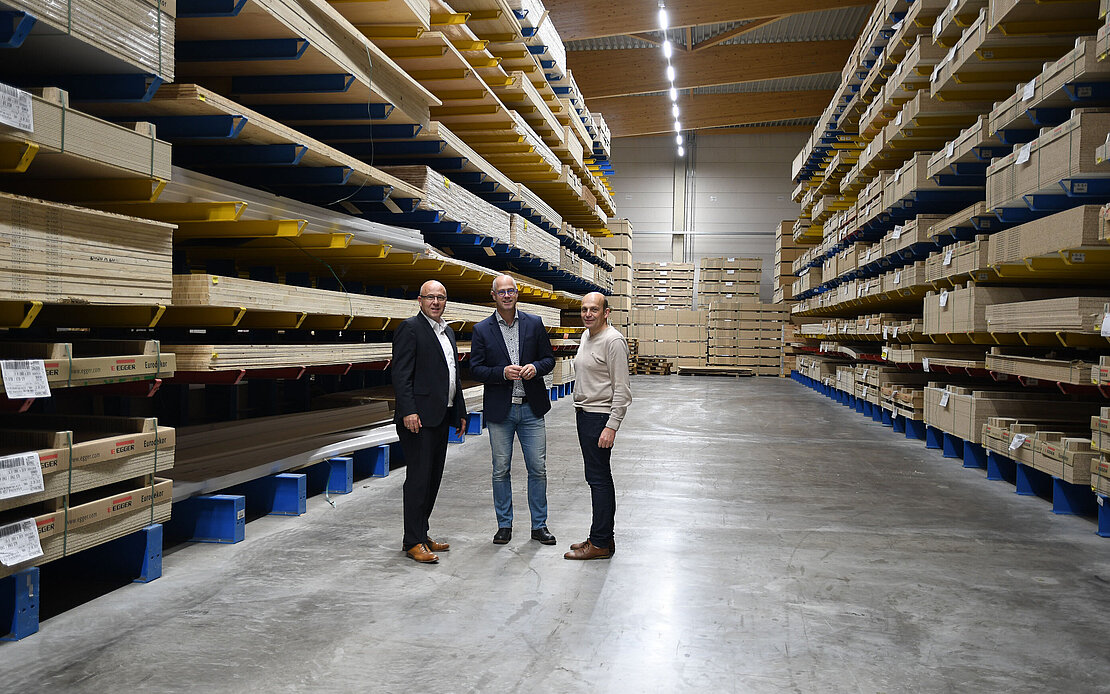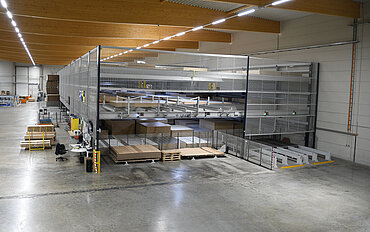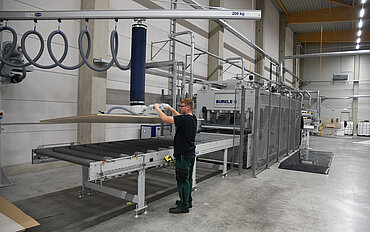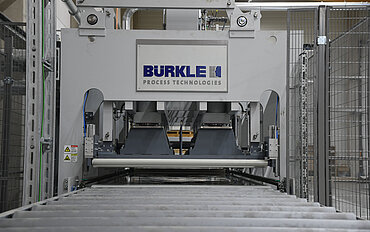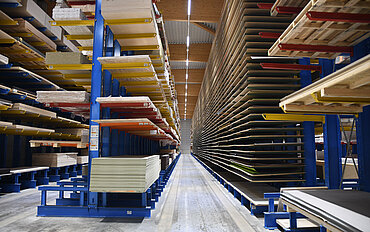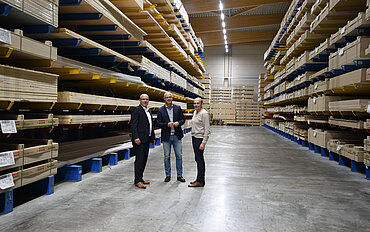The clientele that the Group addresses with its portfolio are usually joineries and carpentries with an average company size of three to ten employees. It is not uncommon for the owner to still be at the machine himself. From Drensteinfurt, these customers are supplied with panel materials, doors and door fittings as well as products for floors, walls and ceilings via the trading locations. For this purpose, the local warehouse maintains a fleet of 30 trucks, which enable logistically optimized transport of individual consignments. These commissions also reflect the fact that the industry and its requirements are changing. "An owner who converts his workshop to CNC technology, for example, no longer necessarily invests in all technologies," explains Ernst. "If he wanted to do this, it could quickly amount to a seven-figure investment. We are finding that fewer and fewer companies are prepared to take this risk. Such businesses therefore need to consider which services they want to cover in the future, just like those that are equipped with modern equipment but will not be continued by the next generation. If these businesses were previously positioned as all-rounders, the owner must now consider which services they want to offer in the future and which they want to hand over."
Changing customer requirements
Last but not least, companies that manufacture high-quality furniture and assemble it for the end customer are becoming less widespread because they are unable to find qualified employees. All in all, all these developments mean that companies are increasingly looking for new ways to efficiently access cost-effectively processed panels or semi-finished products. The neighboring colleague who has invested in a five-axis machining center can help them here, but it can also be suppliers such as Speedmaster or Horatec. "At the same time, existing carpenters are increasingly approaching traditional dealers to have the semi-finished or finished furniture parts delivered," reports Ernst. "Our customer spectrum therefore ranges from companies that buy finished furniture or free-form parts to customers who come to the warehouse in their dungarees, choose their oak planks and then cut them to size themselves. We currently serve between 10,000 and 12,000 customers across this spectrum."
As flexible as possible
In April of this year, Behrens commissioned a new ODW short-cycle throughfeed press from Bürkle for this clientele, thereby expanding its range of services in a targeted manner - on the one hand to respond to changing market requirements, and on the other to actively generate demand. "After all, we have over 430 different laminate surfaces and a wide variety of carrier boards in stock in Drensteinfurt. We can produce and deliver the desired material in any combination, provided it is technically feasible and makes sense. More and more often, we also cut the material to size and mark it." One of the main requirements for the press was therefore its versatility. "We assume a quantity of 1 as well as rainbow pallets in the layer and carrier material," confirms Rainer Alteheld, Head of the Drensteinfurt central warehouse. "Of course, we also run different formats and thicknesses in this colorful pallet." In addition to flexibility, it was also important to Behrens that the press could be expanded - for example in terms of feeding and stacking - should semi-automatic or automatic operation be required in the future. "Safe, low-manpower technology that can be started up quickly, runs smoothly and is easy to handle - these were our criteria for being as flexible as possible," summarizes Alteheld. Requirements that Bürkle immediately understood and translated into a process-reliable system, with Behrens absolutely convinced by the advice and handling.
Individuality in demand
Behrens has now been working with the Bürkle short-cycle continuous press for six months. The pressing, the handling of the parts and the cleaning of the machine all run according to the expectations of the staff. They have been pressing from the day of commissioning, of course they had to gain experience. "But we also have a very good partner in Kleiberit when it comes to glue," emphasizes Alteheld. "Today, the quality is right."
The ODW 1444/60 is a highly flexible system with automatic changeover of all units, including the pressing unit. The adjustment according to the workpiece dimension takes place after automatic measurement of the parts. This means that batch size 1 can be realized without any downtime and without data input by the operator. At the moment, around 80 percent of chipboard and MDF panels are coated with HPL or CPL in Drensteinfurt, and the rest of the processing spectrum is extremely varied. "Basically, one panel is always pressed per cycle," explains Armin Neubert, Marketing Manager at Bürkle. "The capacity of the system ultimately depends on the materials used." The press is currently operated exclusively with D3 glue, whereby both PVAC and PU glues can be processed. After coating, the panels are further processed using either a saw or an edge banding machine. If, on the other hand, the customer only wants the coated element, it is packed ready for dispatch after picking and then delivered. "We also supply the composite elements to the eastern and northern locations that do not operate a press via a round trip between the central warehouses," reports Alteheld. As a result, the capacity utilization of the press on the weekly press day is now very high. Originally, 40 to 80 panels were pressed on this day, but this has now increased to 80 to 120. "As the sites are still exploiting the potential, it is foreseeable that we will offer a second press day," says Alteheld. Not only are more composite elements now being sold than were previously purchased, but the 430 laminates in stock are no longer sufficient. "More and more joiners are asking us to purchase and press more laminates." Individuality is in demand.
Offering a platform
The Behrens Group's expanded range of services is therefore being rewarded by customers. "At the same time, we are coming into contact with companies that were not previously part of our customer base," reports Ernst. One can assume that this development will continue. After all, pressing with the Bürkle system through to formatting and edging will probably be supplemented by further production steps in the future. For Rotenburg, for example, Behrens is already thinking about an additional cutting cell plus edging and a new processing center. "With their current setup, many carpenters will find it difficult to be a service provider for semi-finished and finished products," explains Ernst. "To prepare for the future, they need to establish new ways of doing things that suit their business. We are a wholesaler that focuses its services entirely on carpenters. If they don't produce traditional lacquered cabinets, but rather modern cabinet furniture, we offer them high-quality and flexible services. In this respect, we meet them where they are and offer them an efficient platform." Since April, this has included individually coated panels - on a short-cycle press from Bürkle.
